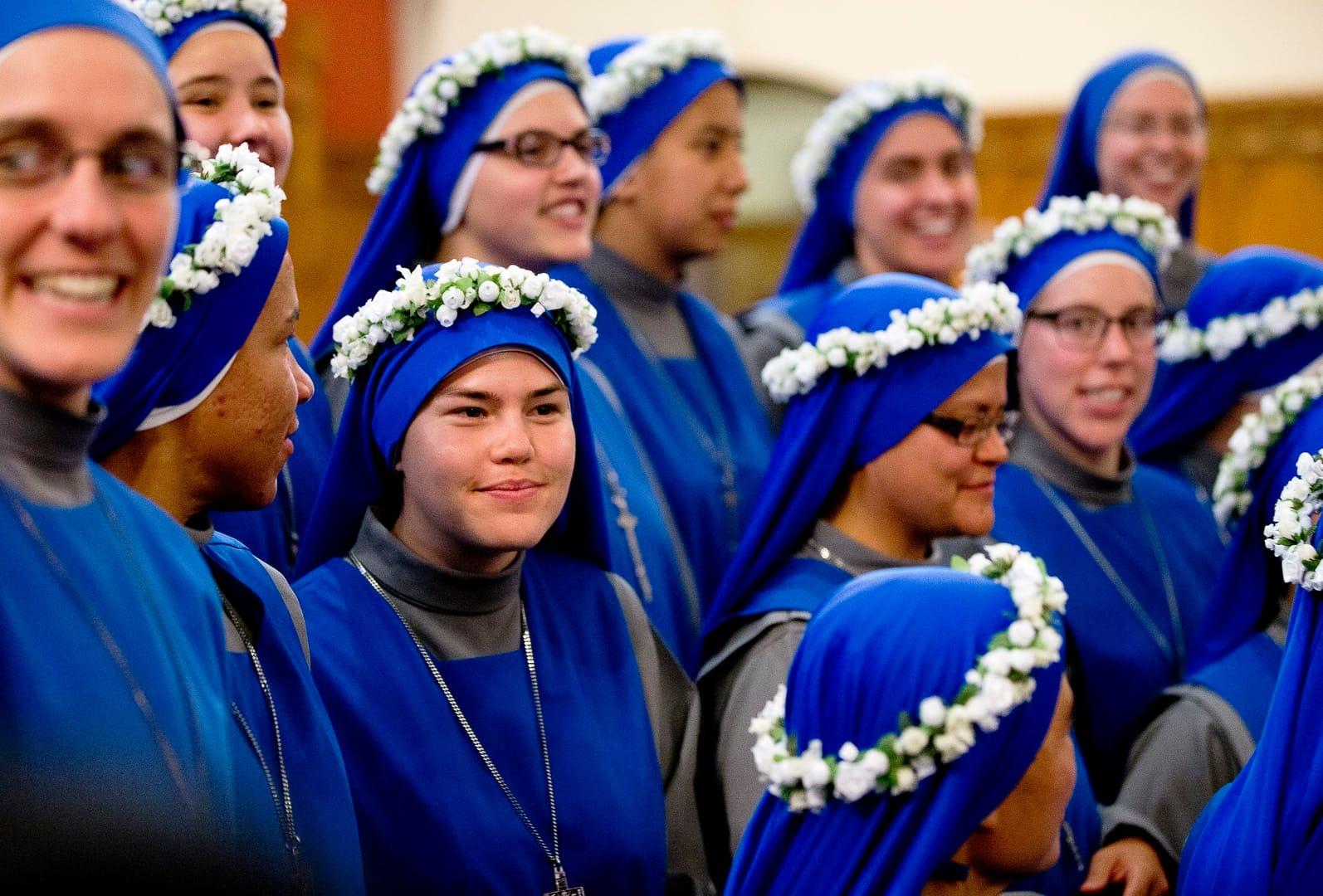NEW YORK – Of the 508 American religious communities which responded to a new survey on the number of men and women who professed perpetual vows in 2023, a total of 438, representing 87 percent, reported that they didn’t have a single member who did so, and only 23 reported that they had more than one.
That tally reinforces other recent data confirming declines in the number of men and women religious in the United States, including a recent projection from the U.S. bishops’ conference that the total will drop 50 percent over the next decade, from 33,000 in 2023 to approximately 17,000 in 2033.
According to a 2023 study by the National Religious Retirement Office, members of religious communities who are 70 or older outnumber those who are younger than 70 by nearly three to one. The data found that the average age of a female religious in the U.S. is 74.85, and 67.64 for men. In the U.S., 55 percent of women religious, and 25 percent of male religious, are over 80 years old.
Aside from declines, the new survey also profiles the new men and women making perpetual vows today.
Major superiors of those 508 religious institutes identified a total of 144 men and women who professed perpetual vows in 2023, including 68 women and 76 men. Of those 144 individuals, the surveyors got responses from 101 to compile further information about demographics, family background, education history, and occupational and ministerial experience.
The survey found that the average age of new religious professing perpetual vows is 36, with half of the responding individuals being age 33 or younger. In terms of race, two-thirds are Caucasian, European American, or White.
The most unanimous finding was that nearly all, or 99 percent, of those 101 men and women who were surveyed were raised by their biological parents during what the survey calls “the most formative part of their childhood.”
“Women and Men Professing Perpetual Voss in Religious Life: The Profession Class of 2023,” was researched and published by the Center for Applied Research in the Apostolate (CARA) at Georgetown University. It was publicized by the U.S. Bishops’ Conference Jan. 26.
To compile the survey, researchers contacted 737 religious institutes, of which 508 responded.
Professing perpetual vows is considered a milestone moment in a religious order, because it signifies the point at which membership in the community becomes permanent.
After Caucasian, European American, or White, the next most prominent race among the profession class of 2023 was Asian/Pacific Islander/Native Hawaiian (12 percent), followed by Hispanic/Latino(a) (9 percent) and African American/Black (7 percent). The remaining five percent of the profession class responded they were mixed race/other. Three-quarters of respondents were born in the United States.
A robust 90 percent of survey respondents said they have been Catholic since birth. The average age of the conversion of those who became Catholic later in life was 24.
Similar to the high number of respondents who were raised by their biological parents, 88 percent of respondents were raised by a married couple that lived together during the formative years of their childhood. Almost all of the respondents, 94 percent, reported that when they were children, at least one of their parents was Catholic, as well.
It’s also clear from the survey results the influence that being around the faith from a young age, and being encouraged to consider a vocation, had on the respondents.
93 percent of respondents said that they participated in one or more religious programs or activities before entering their religious institute, the most common being lectors, altar servers and youth ministers.
An even higher percentage, 96 percent, of respondents said they participated in prayer practices or groups prior to entering their religious institute. 82 percent of respondents also said that someone encouraged them to consider a vocation to religious life, which outweighs the percentage who said they were discouraged from considering a vocation by more than one person – 55 percent.
A news release from the USCCB publicizing the report notes that the study – commissioned annually since 2010 – was done in preparation for the World Day of Prayer for Consecrated Life by the Catholic Church on Feb. 2.
In a statement, Bishop Earl Boyea of Lansing, Michigan, on behalf of the Committee on Clergy, Consecrated Life and Vocations for the US bishops, highlighted the contributions these men and women make.
“In their work, ministry, and community, men and women in consecrated life make a direct and tangible contribution to building up of the body of Christ,” Boyea said Jan. 26.
“Whether it be serving the poor, teaching, providing medical care, or assisting with professional administration, consecrated men and women, in the rich array of their vocations, bring the light of the Gospel into the hearts of all those they encounter,” he said.
Follow John Lavenburg on X: @johnlavenburg















